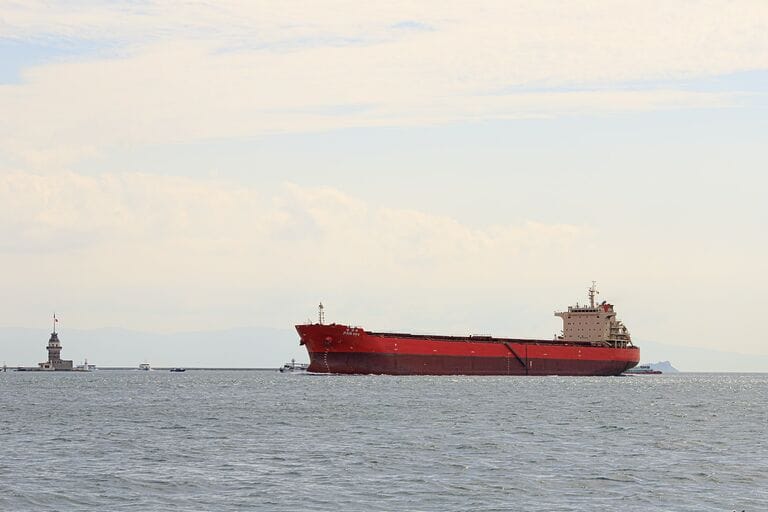Binnacle On Ships
The binnacle is a cylindrical container constructed from non-ferrous materials, traditionally made of wood in the past. It serves as a housing for various components of the magnetic compass. The top part of the binnacle contains the compass bowl, while the middle section is accessible through a door that accommodates corrector magnets. These magnets are responsible for making necessary adjustments to the compass readings. Additionally, the binnacle extends forward with a projector, allowing for easy viewing of the compass from the desired direction.
History
The history of the marine binnacle dates back to the 1700s when it first came into use. Since its inception, numerous advancements have been made to adapt the technology of binnacles to the evolving construction methods of vessels. The binnacle comprises a circular stand that supports a plinth. The plinth is further divided into separate compartments to accommodate the compass and other essential navigational equipment. These divisions ensure the proper organization and accessibility of the instruments housed within the binnacle. Throughout history, the design and construction of binnacles have undergone refinements to meet the changing needs of maritime navigation.
Position
The ship’s binnacle is strategically positioned directly within the helmsman’s line of sight. It serves as a protective housing for the compass and other crucial navigation equipment, ensuring easy accessibility and visibility for the steersman. To facilitate this, binnacles have traditionally been designed to align with the waist height of the helmsman, allowing for effortless observation and precise steering of the vessel. By placing the binnacle at this optimal position, the steersman can effectively monitor the compass readings and maintain the desired course with ease and accuracy.
Within the lower portion of the binnacle, a series of holes house magnetic compass correctors, which counteract the disruptive effects of magnetism induced by the ship’s hull. The specifications for these corrector magnets are determined by a certified “compass adjuster” who is typically engaged when the vessel is in port. It is essential to keep the access door to the corrector magnets securely locked, except when adjustments are required.
One type of corrector is the Flinders Bar, a vertically oriented soft iron bar positioned either forward or aft within the binnacle, depending on the extent of the superstructure behind or in front of the binnacle. The length of the Flinders Bar can be modified during compass adjustment to achieve optimal performance.
Another set of correctors, known as Quadrantal Correctors, consists of two soft iron spheres mounted in brackets on either side of the binnacle. The distance between the quadrantal correctors can be adjusted as part of the compass alignment process.
The binnacle is also equipped with a non-ferrous helmet that covers the compass bowl, providing protection against harsh weather conditions and other environmental factors that could potentially affect the compass’s accuracy. This safeguard ensures the reliable functioning of the compass even in challenging external conditions.
How to Maintenance
Proper care and maintenance of the binnacle are essential for ensuring the reliable performance of the compass and other navigational equipment. Here are some important guidelines to follow:
- Keep access doors locked: It is crucial to keep the access doors to the binnacle securely locked at all times, except when necessary for maintenance or adjustment.
- Varnish wooden binnacles: If the binnacle is made of wood, it should be varnished rather than painted. Varnishing helps protect the wood from moisture and maintain its structural integrity.
- Paint quadrantal corrector: Regularly paint the quadrantal corrector to prevent rust and corrosion from settling on the metal surfaces. This ensures the correctors remain in good working condition.
- Polish brass parts: Periodically polish the brass parts of the binnacle to maintain their shine and prevent tarnishing. This enhances the overall appearance of the binnacle and contributes to its longevity.
- Avoid magnetic materials: Keep all materials with magnetic properties, such as magnets or ferrous objects, away from the compass and the binnacle. These materials can interfere with the accuracy of the compass readings.
- Secure the helmet: Ensure that the helmet, which protects the compass bowl, is securely positioned at all times. This safeguard helps shield the compass from adverse weather conditions and potential damage.
- Seek professional adjustment: All adjustments to the compass and binnacle should be carried out by an authorized compass adjuster. Their expertise ensures accurate calibration and proper alignment of the compass components.
- Remove bubbles from the compass bowl: Regularly inspect the compass bowl within the binnacle and remove any bubbles that may have formed. Bubbles can distort the compass readings, so it’s important to maintain a clear and accurate display.
By adhering to these care and maintenance practices, the binnacle and its components can function optimally, providing reliable navigation assistance on board the vessel.
Need Help At Sea ? Contact Us Now!
BALANCIA SHIP AGENCY
HQ Address : Komplex Ruko Golden City Block C No.3A, Batam City, Indonesia 29432
www.balancia.co.id
Mobile Ph. : +628112929654
Office Ph. : +627784883769










